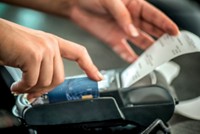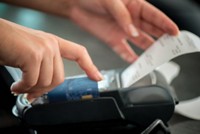Advertisement
Grab your lab coat. Let's get started
Welcome!
Welcome!
Create an account below to get 6 C&EN articles per month, receive newsletters and more - all free.
It seems this is your first time logging in online. Please enter the following information to continue.
As an ACS member you automatically get access to this site. All we need is few more details to create your reading experience.
Not you? Sign in with a different account.
Not you? Sign in with a different account.
ERROR 1
ERROR 1
ERROR 2
ERROR 2
ERROR 2
ERROR 2
ERROR 2
Password and Confirm password must match.
If you have an ACS member number, please enter it here so we can link this account to your membership. (optional)
ERROR 2
ACS values your privacy. By submitting your information, you are gaining access to C&EN and subscribing to our weekly newsletter. We use the information you provide to make your reading experience better, and we will never sell your data to third party members.
Environment
Bisphenol A Is Ubiquitous In Receipts
Endocrine Disrupters: Researchers detect BPA in every receipt that they collected from seven U.S. cities
by Sara Peach
October 9, 2011

The hormone-mimicking chemical bisphenol A is ubiquitous in cash-register receipts in the United States, according to new research (Environ. Sci. Technol., DOI: 10.1021/es202507f). Other paper products, such as envelopes and newspapers, also frequently contain the compound, the study found. As a result, the authors conclude, people are routinely exposed to BPA through their skin, albeit at levels lower than through diet.
In animal studies, researchers have found that BPA can disrupt the reproductive system and increase the risk of certain cancers, but debate continues over whether the levels found in human beings cause health problems. Some manufacturers use a powdery form of the substance to coat cash-register receipts, where it acts as a color developer. Appleton, the company that produces more than half of the receipt paper sold in North America, stopped using BPA in 2006, says spokesman Bill Van Den Brandt.
Kurunthachalam Kannan, chief of the organic analytical chemistry lab at the Wadsworth Center, a public health laboratory in New York state, suspected that other receipts could expose people to the substance. But to his surprise, when he and fellow Wadsworth researcher Chunyang Liao tested 83 receipts from seven U.S. cities, they detected BPA in all of them – even the ones labeled “BPA-free.”
Van Den Brant is also surprised, saying that the results are “not consistent with what we would expect.”
A previous study found that 30% of receipts did not contain BPA (Green Chem. Lett. Rev., DOI: 10.1080/17518253.2010.502908). But the method used in the new study, liquid chromatography combined with tandem mass spectrometry, is nearly 1,000 times more sensitive than methods used in previous studies, Kannan says.
The researchers also tested 99 samples of other paper products, such as toilet paper, newspapers, and airplane boarding passes. They found that 80 of the samples contained BPA. Those samples probably were recycled paper contaminated by BPA-coated receipts, Kannan says.
Next, the researchers estimated BPA exposure from receipts. Other researchers have found that about one-quarter of the BPA on a person’s skin enters the bloodstream (Chemosphere, DOI: 10.1016/j.chemosphere.2010.09.058). Assuming that a person touches a receipt twice a day, people absorb on average 17.5 ng of BPA daily, the researchers estimated. Bank tellers and cashiers, who handle receipts routinely, may be exposed to 1,300 ng of BPA a day.
Joseph Braun, a Harvard University research fellow, says that estimate is consistent with his own research, which found that pregnant cashiers had more BPA in their urine than did pregnant women in other occupations (Environ. Health Perspect., DOI: 10.1289/ehp.1002366).
But people receive far more exposure to BPA through their diet than through their skin, Kannan says. For the average person, exposure from receipts represents less than 2% of daily intake.
The small exposure from receipts should not be dismissed, says Laura Vandenberg, a postdoctoral fellow at the Tufts Center for Developmental and Regenerative Biology, because BPA on the skin goes straight into the blood stream.
“It’s not being metabolized and inactivated,” she says, “and so now you’re ending up with more of the active BPA compound circulating in your body.”





Join the conversation
Contact the reporter
Submit a Letter to the Editor for publication
Engage with us on Twitter